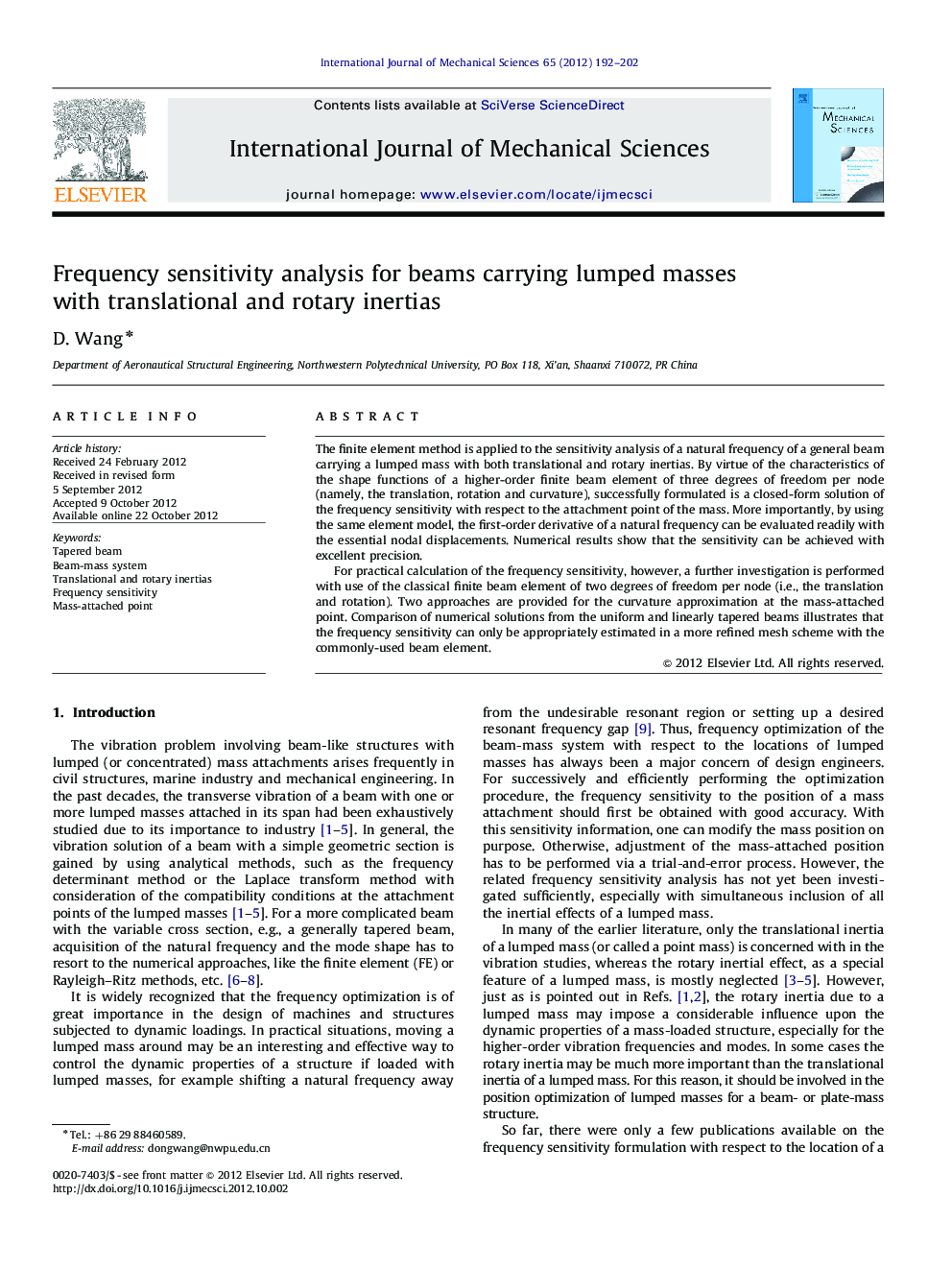| Article ID | Journal | Published Year | Pages | File Type |
|---|---|---|---|---|
| 785860 | International Journal of Mechanical Sciences | 2012 | 11 Pages |
The finite element method is applied to the sensitivity analysis of a natural frequency of a general beam carrying a lumped mass with both translational and rotary inertias. By virtue of the characteristics of the shape functions of a higher-order finite beam element of three degrees of freedom per node (namely, the translation, rotation and curvature), successfully formulated is a closed-form solution of the frequency sensitivity with respect to the attachment point of the mass. More importantly, by using the same element model, the first-order derivative of a natural frequency can be evaluated readily with the essential nodal displacements. Numerical results show that the sensitivity can be achieved with excellent precision.For practical calculation of the frequency sensitivity, however, a further investigation is performed with use of the classical finite beam element of two degrees of freedom per node (i.e., the translation and rotation). Two approaches are provided for the curvature approximation at the mass-attached point. Comparison of numerical solutions from the uniform and linearly tapered beams illustrates that the frequency sensitivity can only be appropriately estimated in a more refined mesh scheme with the commonly-used beam element.
► A higher-order beam element model is applied to the sensitivity analysis of a beam. ► The frequency sensitivity to the position of a mass of both inertias is developed. ► The higher-order beam model can be used for precise evaluation of the sensitivity. ► The cubic beam element can also be used for sensitivity evaluation in finer meshes. ► Two approaches are presented for the curvature estimation at a finite mesh node.
